 | SOLD items 2017 archive 1 product details :
JPW Sonata
stand speakers - 1st pair
|  | SOLD |
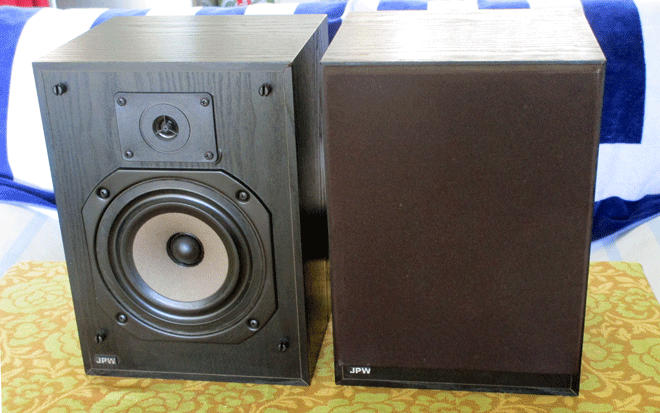 | 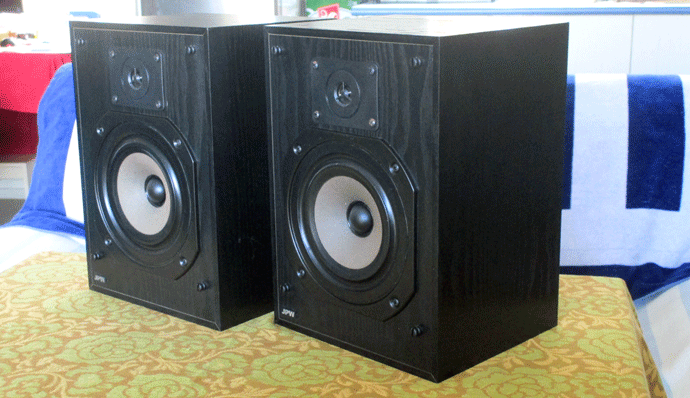 |
| JPW Sonata stand / rear speakers : front view | JPW Sonata speakers : right profile |
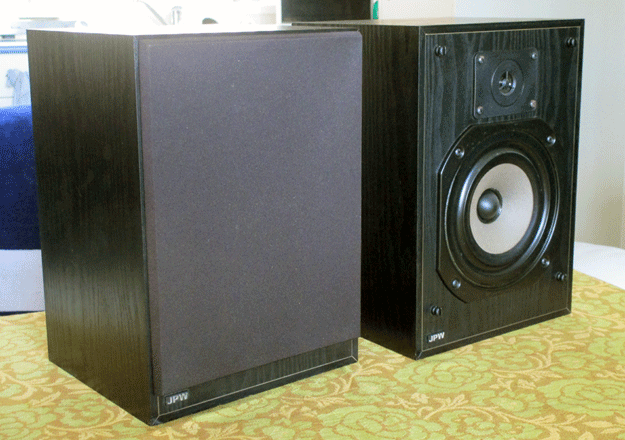 | 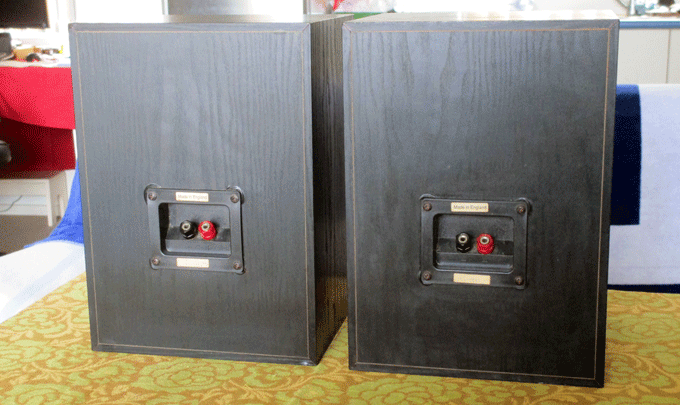 |
| JPW Sonata speakers : grille on, grille off | JPW Sonata speakers : back view |
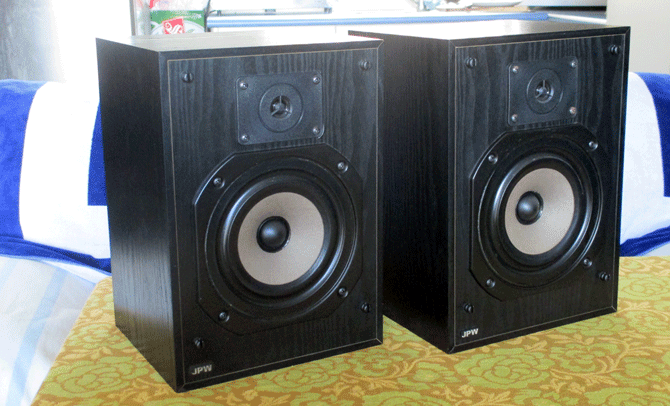 | 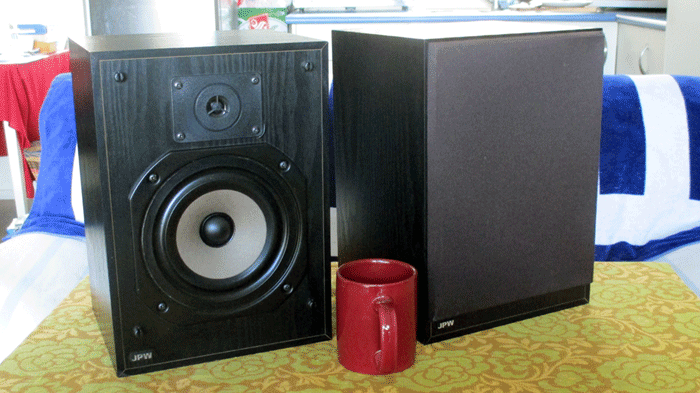 |
| JPW Sonata speakers : left profile | JPW Sonata speakers : size scale |
| SOLD January 2017 on trademe to Whanganui | S/Ns: 0101541 / both |
| | |
sitemap JPW Sonata [1st pair] stand speakers specifications Back to NRPavs Home
JPW Sonata [1st pair] speakers - black :
• Compact 2-way sealed box monitors in black colour
Features :
• Sealed box loading for tight bass
• Drive Units : 16.5cm paper cone bass unit with PVC surround, 1.4cm dome tweeter with ferro-fluid damping
WHAT HI-FI? May 1991 review of small box speakers comparison :
This is the one. The JPW is the best of the budget loudspeakers, and by such an overwhelming margin that there’s effectively no contest
The only problem with the Sonata, and this point has been made many times in the past, is that the tweeter can sound somewhat aggressive to the point of rawness when used directly from the box. It takes a considerable amount of running in before it reaches its peak
When this has been accomplished, however, the improvement made is truly astonishing. It’s true that the treble doesn’t have either the grace or informativeness of the Wharfedale Diamond IV or Celestion 3 metal domes,
but in this loudspeaker it is the bass/midrange driver that takes most of the load, and the whole area from lower treble down to the bass has an energy, vitality quite unique in this price range
Colouration levels from the enclosure are much lower than normal, a fair reflection of the materials employed and the way they have been used, but the bass is also deeper and more solid. This helps provide a firmer foundation to the music, which literally sounds larger in scale and more tactile in feel when it matter
The occasional rawness of the design imposes limitations on partnering equipment, which by preference should be smooth and well-behaved. This point apart, there were obvious constraints in the way the Sonata works with amplifiers and other components
Build-quality mirrors the findings for sound quality. The sealed enclosure is larger than the other budget models, yet it is easily the most solid and resonance-free cabinet, partly achieved by using real wood veneers (with a balancing veneer internally) which helps stiffen the chipboard inbetween. Real wood veneers are more than merely decorative
By contrast the combination of cone/dome tweeter and pulp cone bass look rather prosaic, but this belies the fact that what they are counts for less than how they are used. By any standards, it must be said, the JPW represents exceptional value for money
+ Large, dynamic sound; it’s a real winner - A trace of roughness; there’s little else to say
The conclusion of the small loudspeaker test had the JPW Sonata coming 2nd (Acoustic Energy AE1 came in first in its original guise)
In conclusion they went on to say . . .
The JPW Sonata is far from being the second-best-sounding loudspeaker of the group (of 16 ranging from £100 to £800). It is the best value however, and by a sizable margin
First appearances suggest a very ordinary system based on cost effective but rather ordinary drive units, the only slightly unusual point being the size of the enclosure, which is bigger than most of the price level. Take a closer look though, and you’ll see that the finish is real wood veneer which is extremely uncommon even at twice the price
The idea of using real wood veneers on the box has certain attractions on aesthetic grounds of course, but there’s another much more important, though largely unrecognised, factor here
Veneers strengthen the panels they’re applied to. A (cosmetically inferior) veneer is used on the inside of the panels for balancing purposes, and the effect is to sandwich the chipboard that makes up most of the thickness of the walls, in this case stiffening it enough to make the Sonata much less resonant than usual when tested with the standard knuckle test
— basically, you rap it hard and listen for echoes (bad) or a dull thud (good)
The solidity of the enclosure reflects directly in the solidity of the sound, which extends throughout the frequency range down to the deepest bass, which where most lightweight cheapies come unstuck
The Sonata is the speaker of contrasts : dynamic contrasts, tone colour contrasts, contrasts between notes and the spaces in between that somehow seem to get ‘filled up’ in lesser designs. A visual analogy for these benefits being the loss of deep blacks and subtle shadow detail on lesser television receivers
Don’t expect the Sonata to perform great straight from the box. Judge them after a thorough running-in process, which will take you at least a week, the Sonata will show their best
SOLD January 2017 on trademe to Whanganui
|
|